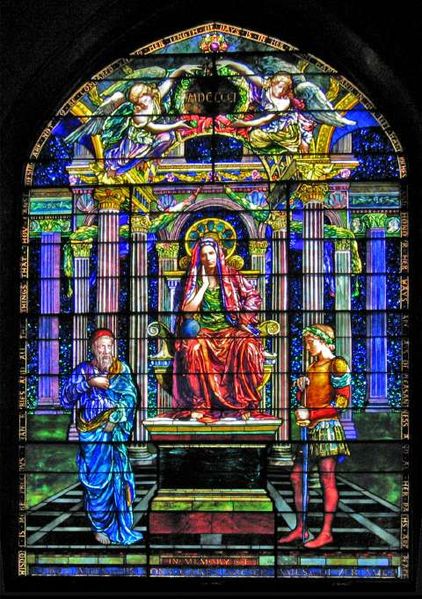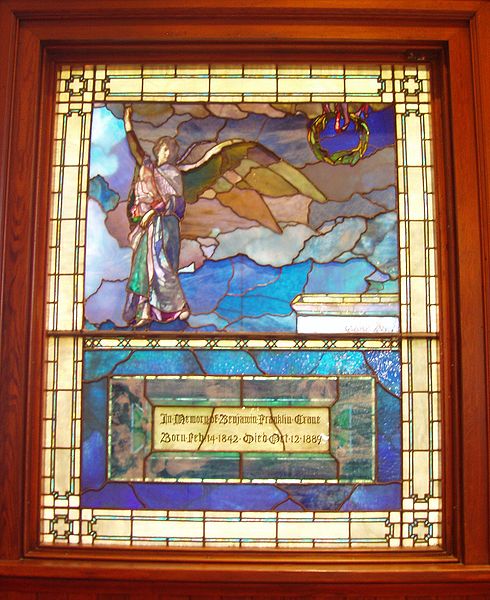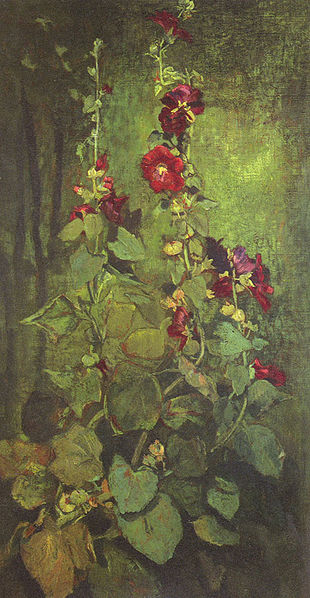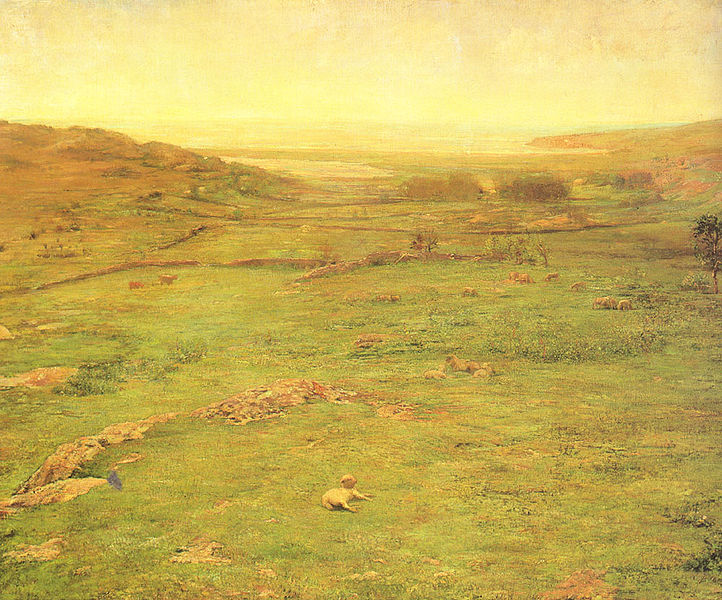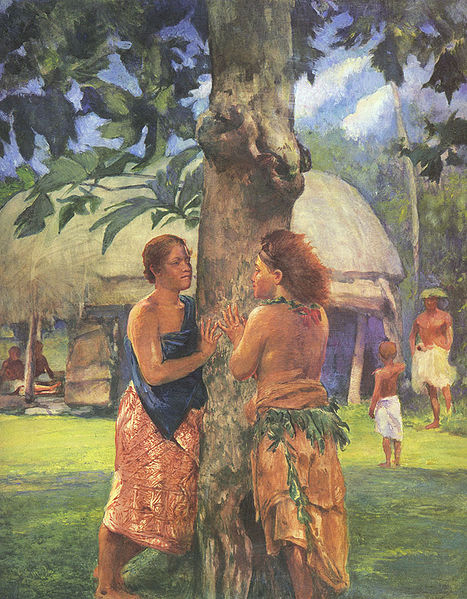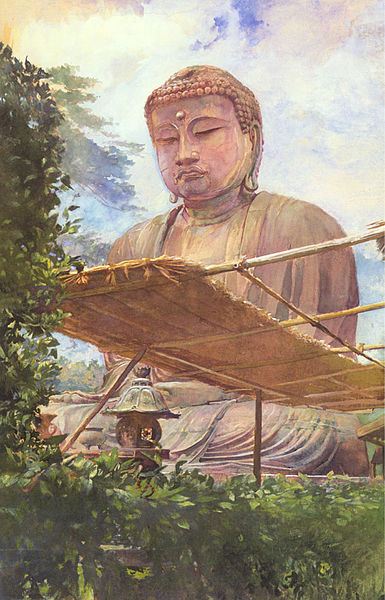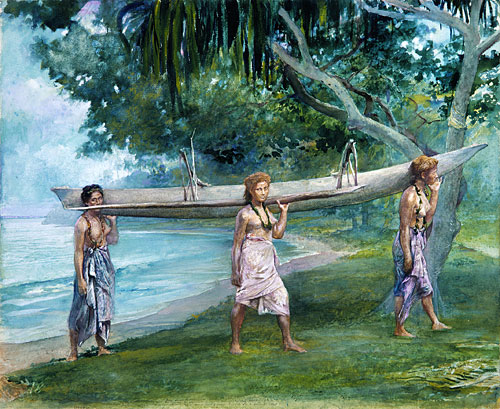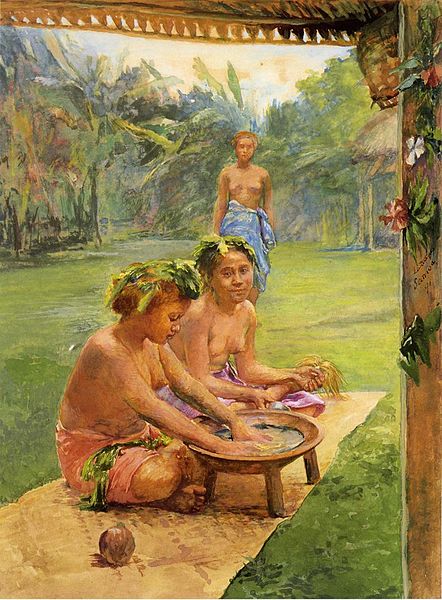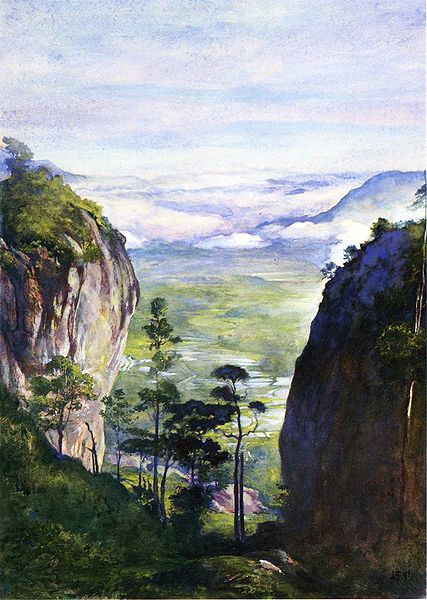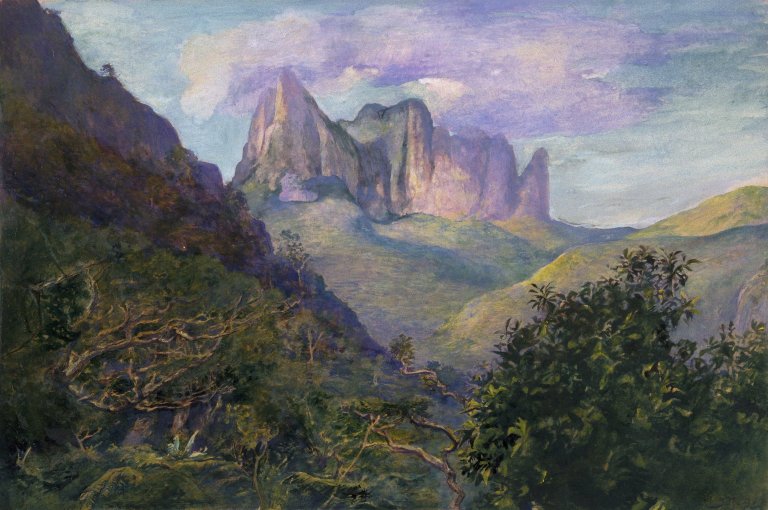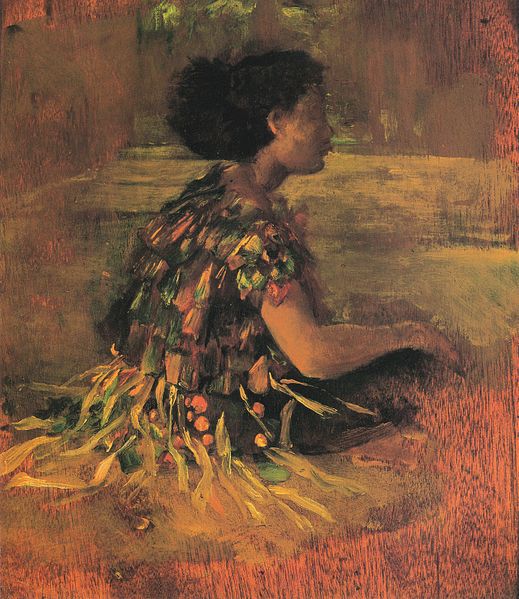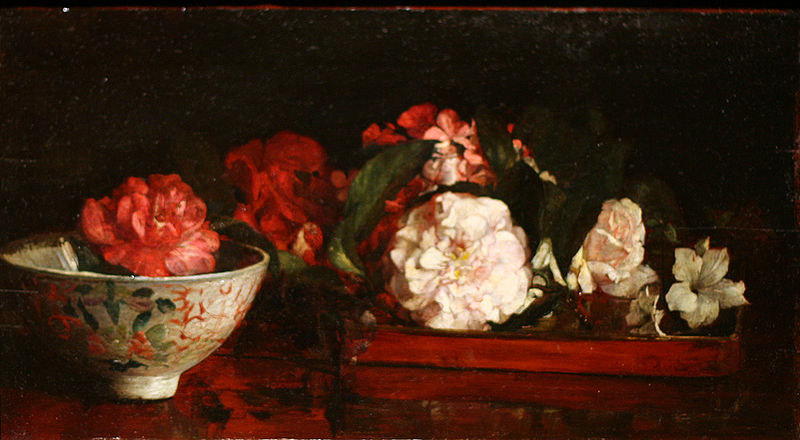<Back to Index>
- Painter and Stained Glass Window Maker John LaFarge, 1835
PAGE SPONSOR
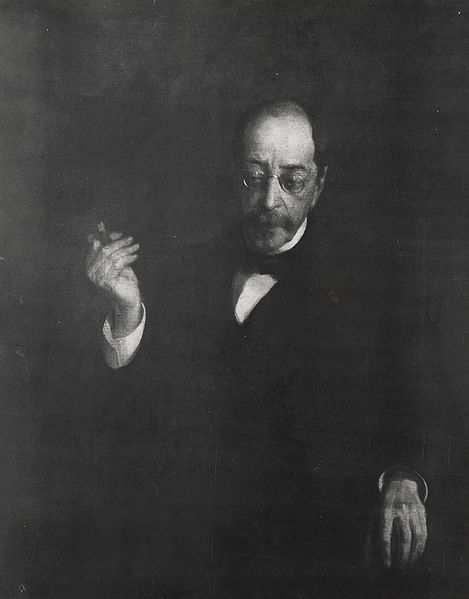
John La Farge (March 31, 1835 – November 14, 1910) was an American painter, muralist, stained glass window maker, decorator and writer.
LaFarge was born in New York City to wealthy French parents and was raised bilingually. His interest in art began during his studies at Mount St. Mary's University and St. John's College (now Fordham University). He initially intended to study law.
This changed after his first visit to Paris, France, in 1856. Stimulated by the arts in the city, he studied with Thomas Couture and became acquainted with notable literary people. LaFarge subsequently studied with the painter William Morris Hunt in Newport. Even LaFarge's earliest drawings and landscapes done in Newport, Rhode Island, show marked originality, especially in the handling of color values. He was a pioneer in the study of Japanese art, which influence is seen in his work.
Between 1859 and 1870, he illustrated Tennyson's Enoch Arden and Robert Browning's Men and Women. Breadth of observation and structural conception, and a vivid imagination and sense of color are shown by his mural decorations. His first work in mural painting was done in Trinity Church, Boston, in 1873. Then followed his decorations in the Church of the Ascension (the large altarpiece) and St. Paul's Chapel (Columbia University), New York. For the Minnesota State Capitol at St. Paul, he executed at age 71 four great lunettes representing the history of law. He created a similar series based on the theme of Justice for the State Supreme Court building at Baltimore, Maryland.
During his life, LaFarge maintained a studio at 51 West 10th Street in Greenwich Village, which is now part of the site of Eugene Lang College. LaFarge painted extensively, recording his extensive travels in Asia and the South Pacific. He visited Japan in 1886, and the South Seas in 1890 and 1891, in particular spending time and absorbing the culture of Tahiti. Henry Adams accompanied him on these trips as a travel companion. He visited Hawaii in September of 1890, where he painted scenic spots on Oahu and traveled to the Island of Hawaii to paint an active volcano.
Enjoying an extraordinary knowledge of languages (ancient and modern), literature, and art, by his cultured personality and reflective conversation, he influenced many other people. Though naturally a questioner, he venerated the traditions of religious art, and preserved his Catholic faith and reverence.
On his death in 1910, John LaFarge was interred in the Green - Wood Cemetery in Brooklyn, New York.
La Farge experimented with color problems, especially in the medium of stained glass. He rivaled the beauty of medieval windows and added new resources by inventing opalescent glass and by his original methods of superimposing and welding his materials.
Among his many stained glass works are windows at:
- Trinity Church, Boston (1877 – 78);
- Biltmore Estate in Asheville, NC (1881);
- Church of St. Joseph of Arimathea in Greenburgh, New York (1883);
- St. Paul's Chapel, Columbia University, NYC (1888 – 99) Restored by The Greenland Studio NYC;
- First Unitarian Church of Philadelphia (1891);
- Trinity Episcopal Church in Buffalo, NY (1886 – 89);
- All Saints Episcopal Church, Briarcliff Manor, New York (1889);
- Edwin Booth as Hamlet, at Church of the Transfiguration, Episcopal (Manhattan),New York City (1898) Restored by Victor Rothman Stained Glass, Yonkers NY;
- Mount Vernon Church, Boston, 1890s;
- Our Lady of Mercy Chapel at Salve Regina University in Newport, RI.
He married on October 15, 1860 at Newport, Rhode Island, Margaret Mason Perry, who was born on February 26, 1839 in Newport, Rhode Island, and died on May 2, 1925.
Her father was Christopher Grant Perry, the son of Commodore Oliver Hazard Perry and Elizabeth Champlin Mason. He was a descendant of Gov. Thomas Prence (1599 - March 29, 1673) a co-founder of Eastham, Massachusetts, a political leader in both the Plymouth and Massachusetts Bay colonies, and governor of Plymouth (1634, 1638, and 1657 – 1673); and Elder William Brewster (pilgrim) (c. 1567 - April 10, 1644), the Pilgrim leader and spiritual elder of the Plymouth Colony and a passenger on the Mayflower.
Her mother was Frances Sergeant, who was the daughter of Chief Justice Thomas Sergeant and Sarah Bache, the daughter of Sarah Franklin Bache and Richard Bache. She was a great - granddaughter of Benjamin Franklin, one of the Founding Fathers of the United States of America and Deborah Read.
His eldest son, Christopher Grant LaFarge, was a partner in the New York based architectural firm of Heins & LaFarge. He designed projects in Beaux - Arts style, notably the original Byzantine Cathedral of St. John the Divine, the Yale undergraduate society St. Anthony Hall (extant 1893 – 1913) and the original Astor Court buildings of the Bronx Zoo.
His son Oliver Hazard Perry LaFarge I became an architect and real estate developer. Part of his career in real estate was in a Seattle partnership with Marshall Latham Bond, Bond & LaFarge. He designed the Perry Building, still standing in the city. Later in life O.H.P. LaFarge designed buildings for General Motors.
John LaFarge, Jr., S.J., became a Jesuit priest and a strong supporter of anti - racist policies.
- He received the Cross of the Legion of Honor from the French Government.
- He was elected president of National Society of Mural Painters from 1899 through 1904, and was a member of the principal artistic societies of the United States.
- In 1904, he was one of the first seven artists chosen for membership in the American Academy of Arts and Letters.
